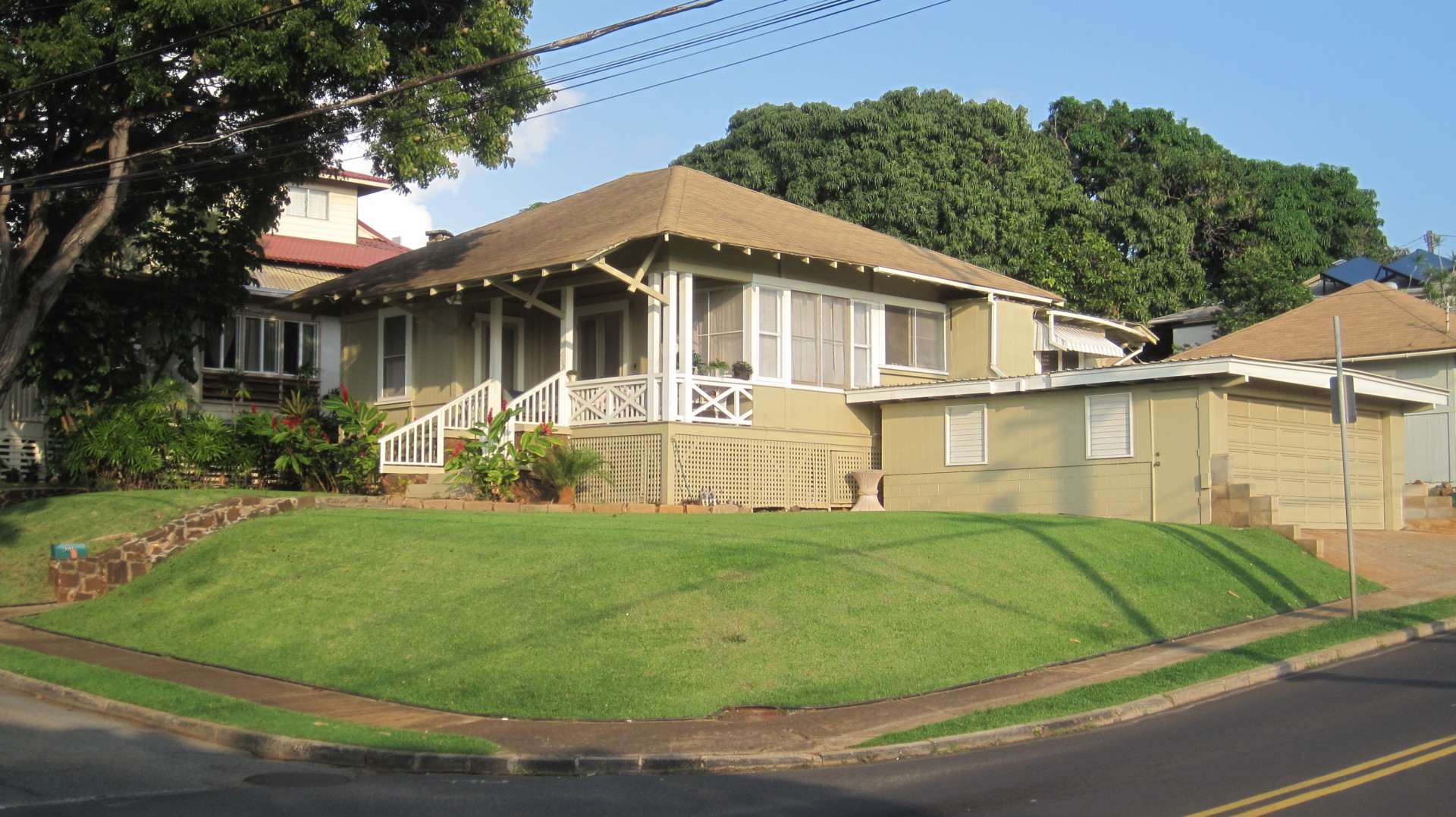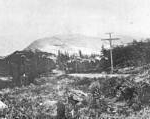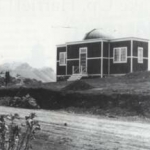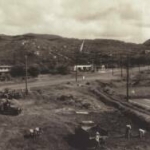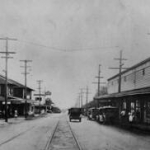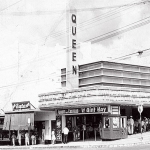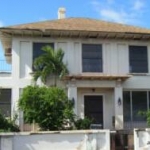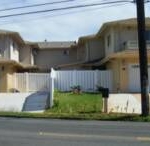By Jill Byus Radke for Historic Hawaii Foundation
Kaimuki is a classic early twentieth century neighborhood on the Koko Head side of downtown Honolulu.
Kaimukī means ‘tī oven’, a reference to the legend of the Menehune cooking tī roots in the area. Kaimuki is a naturally dusty, dry area that was not heavily populated during precontact times because of a lack of water. The only spring known today is on Luakaha Street near the Salvation Army.
There were up to four heiau in the Kaimukī area:
- Maumae (Sierra Drive)
- Honolulu side of Kaimuki Hill
- Between Ocean View Drive and former Waialae Drive-In
- Parking lot at Lē‘ahi Hospital
Early Land Uses
When King Kamehemeha stationed his troops on the beaches of Waikīkī in preparation for the battle of O‘ahu, he stationed lookouts at Kaimukī to spot enemies arriving by sea.
Pu‘u o Kaimukī aka “Kaimuki Hill” is the predominant feature of the area and has been a reservoir, a telegraph station, an observatory, and now a park.
When Honolulu became a major point of commerce, “Kaimuki Hill” was used as a semaphore signal station, giving it the name “telegraph hill.”
As early as 1883, it was used as a trig station for surveying purposes. In 1910, Haley’s comet appeared and the UH observatory located at telegraph hill was the ideal place to see it.
By the time of the great Māhele, Kaimukī was primarily left to William Lunalilo by Kamehameha III. In 1884, the land sold at auction to Dr. Georges Phillipe Trousseau, later a physician in Kalākaua’s Royal Court, for $2,325.
While Kaimuki was under his ownership, Dr. Trousseau used the land for cattle grazing and as an ostrich farm. He eventually gave the land to Paul Isenberg, who sold the 324 acres to Theodore Lansing & A.V. Gear for $20,000 in 1898.
Infrastructure
Getting a water supply to Kaimukī was a requirement for building the neighborhood. To do this, the developers used Pu‘u o Kaimukī (“Telegraph Hill”) as a reservoir.
On July 18, 1898, an article in The Independent (Honolulu, Territory of Hawaii), announced “A New Suburb”:
“The gentle slope of the land prevents any resident from shutting off the scenery from his neighbor and the cool fresh breeze will always be felt and enjoyed in every nook and corner of the tract. The land has a frontage on the Kapahulu road and on the Waialae road which is the direct continuance of Beretania street. The roads mentioned are in excellent condition and will be pronounced so by riders, drivers, bicyclists and pedestrians.”
From there, F.E. Richardson and Co. were contracted by the developers to route the water through a main along Kaimuki Ave. and with smaller pipes branching to deliver the water to the houses.
Kaimuki Subdivision
After purchasing the land in 1898, bringing water to the area and building roads to the area, Lansing and Gear subdivided the land into lots for homes and sold the lots at three cents per square foot. Once they brought on A.B. Lobenstein, sales of the 600 x 500 square-foot lots were selling for $400 each.
Many of the homes were built by Lewers and Cooke Company or ordered through a catalogue of “pre-fabricated” buildings shipped from the mainland for as little as $700.
Transportation
Kaimuki was envisioned as a suburb, where the residents could commute to Honolulu each day for work. To do this, transportation needed to be improved.
First, roads were built by the developers to connect the homes with Waialae Avenue. The biggest boost to popularity occurred in 1903, when the Waialae Ave. electric streetcar began service to Kapahulu and Koko Head Avenue.
As the automobile gained popularity and suburbs towards Koko Head were constructed, Waialae Avenue was solidified as a major throughfare that boomed with business.
1950s – 1980s
In the late 1950s and 1960s, the development of Ala Moana Shopping Center and Waialae Shopping center added competition and slowed business. The construction of H-1 Freeway diverted commuters from the Wai‘alae thoroughfare, which further hurt Kaimukī businesses. The community fought to get the exit ramps added, and once that was accomplished, the business district was, once again easily accessible.
Ironically, the construction of the freeway, which hurt business, is probably what has saved Kaimukī’s main street of businesses. With the diversion of traffic, there was not the development pressure to demolish and rebuild larger strip malls.
Houses in the 1950s and 1960s began to change to the boxier styles, and ‘ohana zoning & rules requiring attached ‘ohana dwellings altered the character of the older bungalows if they were spared the wrecking ball.
The 1970s and 1980s saw an increase in bungalows replaced by residential “boxes.” By the end of the 1980s and 1990s, more of the classic Kaimuki homes were replaced by McMansions and “Garage Mahals” which continue to plague the area.
The “Tear-Down Trend” continues well into 2010 with the continued loss of of the historic in favor of the gigantic. One particularly visible example of this is the upcoming demolition of the former Lam Residence, a landmark at 6th Ave. and Charles Street for over a hundred years. It will soon be replaced with a two-home compound a large six-foot wall.


